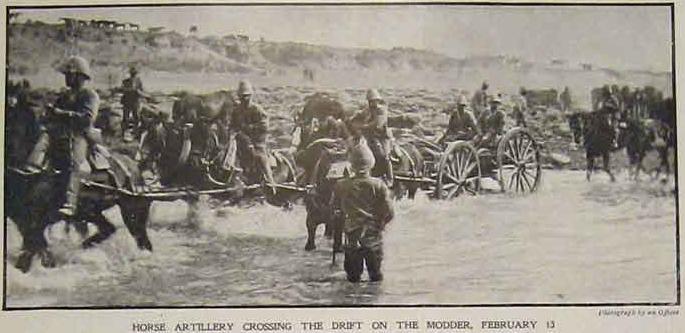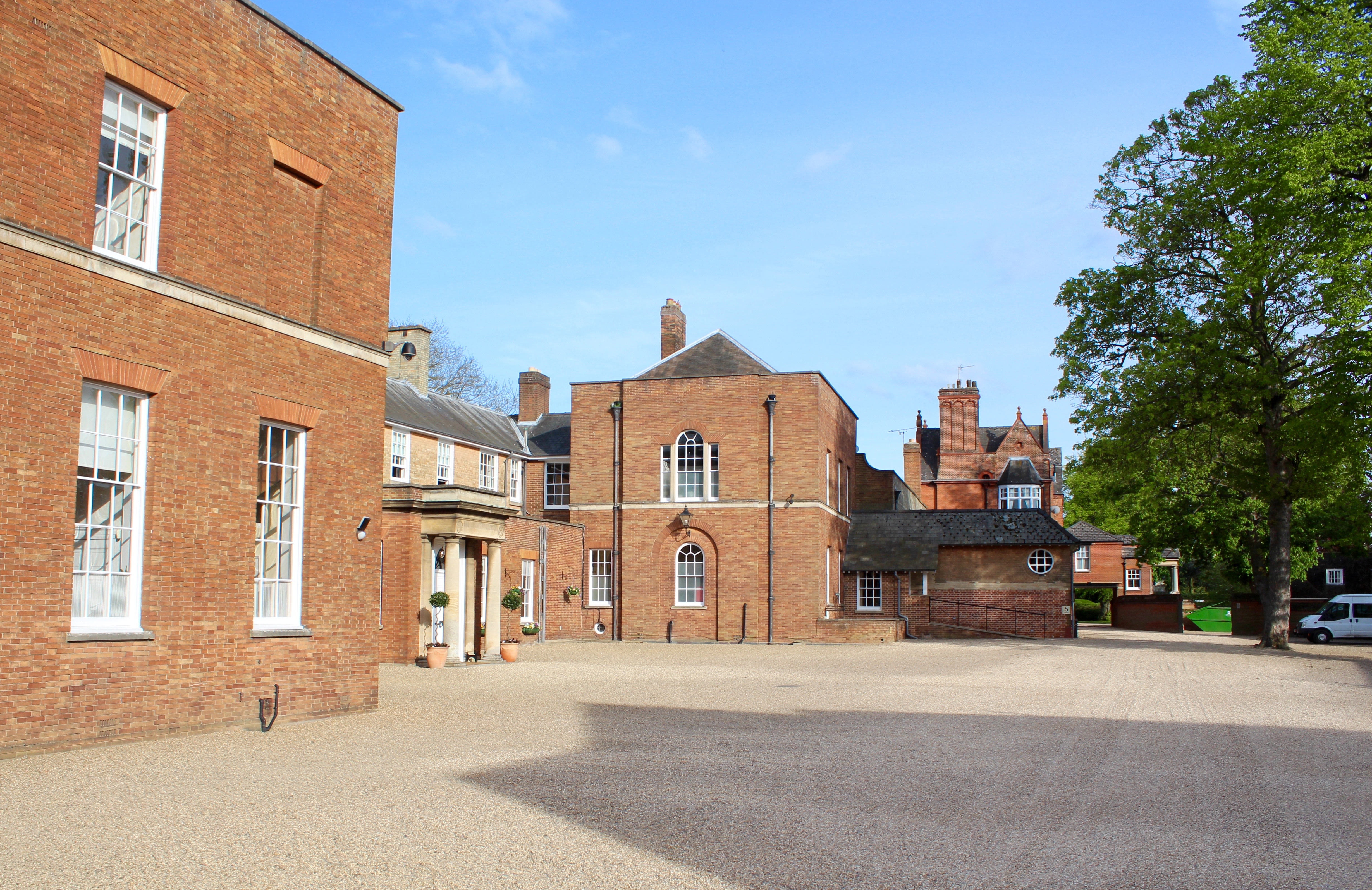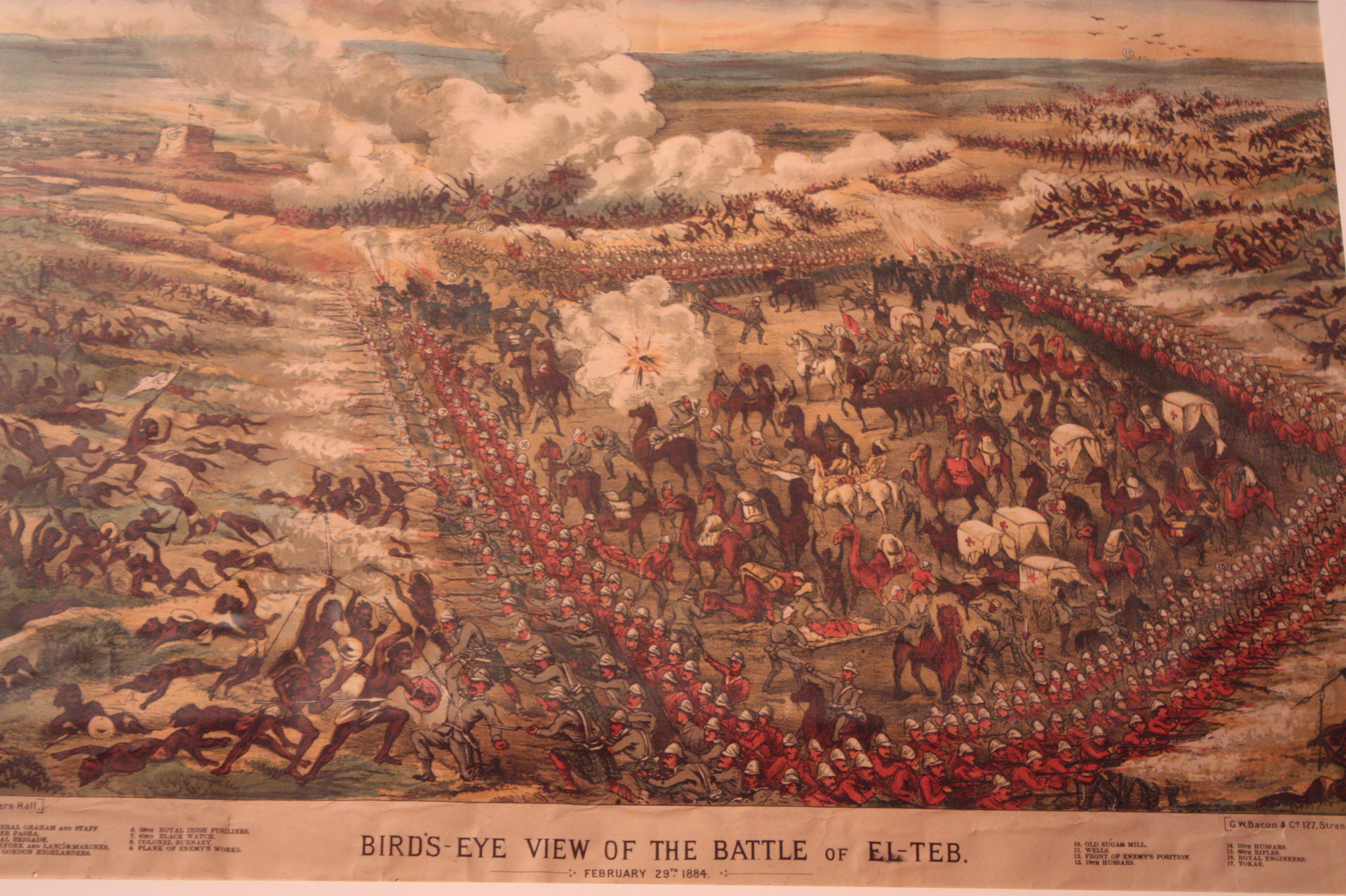|
GD Giles
Godfrey Douglas Giles (9 November 1857 Karachi - 1 February 1941) was a painter of horses, military scenes and battles, many experienced firsthand while on service with the British Army in India, Afghanistan, Egypt and South Africa. He produced numerous caricatures for the magazine '' Vanity Fair''. Biography Giles was the son of Captain Edward Giles of the Royal Navy who was stationed at Karachi. Godfrey Douglas Giles was a boarding boy at Cheltenham. He was sent to the Royal Military College, Sandhurst, to launch his military career, and his first posting was in India in 1875. He saw action in the Second Afghan War with the 1st Sind Horse and the 19th Native Infantry, chiefly on the Khleat and Kandahar fronts, and according to one obituary notice, had been present at Maiwand. He certainly was present at the battle of Khuski-Nakhud in February 1879 and later painted the ''Charge of the Scinde Horse at Khuski-Nakhud''. He also painted a scene of E/B Battery Royal Horse Art ... [...More Info...] [...Related Items...] OR: [Wikipedia] [Google] [Baidu] |
Karachi
Karachi (; ur, ; ; ) is the most populous city in Pakistan and 12th most populous city in the world, with a population of over 20 million. It is situated at the southern tip of the country along the Arabian Sea coast. It is the former capital of Pakistan and capital of the province of Sindh. Ranked as a beta-global city, it is Pakistan's premier industrial and financial centre, with an estimated GDP of over $200 billion ( PPP) . Karachi paid $9billion (25% of whole country) as tax during fiscal year July 2021 to May 2022 according to FBR report. Karachi is Pakistan's most cosmopolitan city, linguistically, ethnically, and religiously diverse, as well as one of Pakistan's most secular and socially liberal cities. Karachi serves as a transport hub, and contains Pakistan’s two largest seaports, the Port of Karachi and Port Qasim, as well as Pakistan's busiest airport, Jinnah International Airport. Karachi is also a media center, home to news channels, film and fashi ... [...More Info...] [...Related Items...] OR: [Wikipedia] [Google] [Baidu] |
Loyal Suffolk Hussars
The Duke of York's Own Loyal Suffolk Hussars was a Yeomanry regiment of the British Army. Originally formed as a volunteer cavalry force in 1793, it fought in the Second Boer war as part of the Imperial Yeomanry. In the World War I the regiment fought at Gallipoli, in Palestine and on the Western Front. The unit was subsequently converted into a Royal Artillery unit, serving in the anti-tank role North Africa, Italy and France during World War II. The lineage is maintained by No. 677 (Suffolk and Norfolk Yeomanry) Squadron AAC. French Revolutionary and Napoleonic Wars After Britain was drawn into the French Revolutionary Wars, a number of independent cavalry Troops were raised in the County of Suffolk from August 1793. The following year the government of Prime Minister William Pitt the Younger proposed that the counties should form Corps of Yeomanry Cavalry that could be called on by the King to defend the country against invasion or by the Lord Lieutenant to subdue a ... [...More Info...] [...Related Items...] OR: [Wikipedia] [Google] [Baidu] |
Battle Of Paardeberg
The Battle of Paardeberg or Perdeberg ("Horse Mountain") was a major battle during the Second Anglo-Boer War. It was fought near ''Paardeberg Drift'' on the banks of the Modder River in the Orange Free State near Kimberley. Lord Methuen advanced up the railway line in November 1899 with the objective of relieving the Siege of Kimberley (and the town of Mafeking, also under siege). Battles were fought on this front at Graspan, Belmont, Modder River before the advance was halted for two months after the British defeat at the Battle of Magersfontein. In February 1900, Field Marshal Lord Roberts assumed personal command of a significantly reinforced British offensive. The army of Boer General Piet Cronjé was retreating from its entrenched position at Magersfontein towards Bloemfontein after its lines of communication were cut by Major General John French, whose cavalry had recently outflanked the Boer position to relieve Kimberley. Cronjé's slow-moving column was intercep ... [...More Info...] [...Related Items...] OR: [Wikipedia] [Google] [Baidu] |
Piet Cronjé
Pieter Arnoldus "Piet" Cronjé (4 October 1836 – 4 February 1911) was a South African Boer general during the Anglo-Boer Wars of 1880–1881 and 1899–1902. Biography Born in the Cape Colony but raised in the South African Republic, Cronjé had a distinctive appearance, being short with a black beard and was reputed to have considerable personal courage. He made his reputation in the First Boer War, besieging the British garrison at Potchefstroom. He was unable to force their surrender until after the conclusion of the general armistice, and was at this time accused of withholding knowledge of this armistice from the garrison. Cronjé was in command of the force that rounded up Leander Jameson at Doornkop at the conclusion of the Jameson Raid on 2 January 1896. During the Second Boer War, Cronjé was general commanding in the western theatre of war. He began the sieges of Kimberley and Mafeking. At Mafeking, with a force between 2,000 and 6,000 he laid siege ... [...More Info...] [...Related Items...] OR: [Wikipedia] [Google] [Baidu] |
John French, 1st Earl Of Ypres
Field Marshal John Denton Pinkstone French, 1st Earl of Ypres, (28 September 1852 – 22 May 1925), known as Sir John French from 1901 to 1916, and as The Viscount French between 1916 and 1922, was a senior British Army officer. Born in Kent to an Anglo-Irish family, he saw brief service as a midshipman in the Royal Navy, before becoming a cavalry officer. He achieved rapid promotion and distinguished himself on the Gordon Relief Expedition. French had a considerable reputation as a womaniser throughout his life, and his career nearly ended when he was cited in the divorce of a brother officer while in India in the early 1890s. French became a national hero during the Second Boer War. He won the Battle of Elandslaagte near Ladysmith, escaping under fire on the last train as the siege began. He then commanded the Cavalry Division, winning the Battle of Klip Drift during a march to relieve Kimberley. He later conducted counter-insurgency operations in Cape Colony. During the Ed ... [...More Info...] [...Related Items...] OR: [Wikipedia] [Google] [Baidu] |
Daily Graphic (UK)
''The Graphic'' was a British weekly illustrated newspaper, first published on 4 December 1869 by William Luson Thomas's company Illustrated Newspapers Ltd. Thomas's brother Lewis Samuel Thomas was a co-founder. The premature death of the latter in 1872 "as one of the founders of this newspaper, nd whotook an active interest in its management" left a marked gap in the early history of the publication. It was set up as a rival to the popular ''Illustrated London News''. The influence of ''The Graphic'' within the art world was immense, its many admirers included Vincent van Gogh, and Hubert von Herkomer.Mark Bills, "Thomas, William Luson (1830–1900)", ''Oxford Dictionary of National Biography'', Oxford University Press, 2004 It continued to be published weekly under this title until 23 April 1932 and then changed title to ''The National Graphic'' between 28 April and 14 July 1932; it then ceased publication, after 3,266 issues. From 1890 until 1926, Luson Thomas's company, H. ... [...More Info...] [...Related Items...] OR: [Wikipedia] [Google] [Baidu] |
Second Boer War
The Second Boer War ( af, Tweede Vryheidsoorlog, , 11 October 189931 May 1902), also known as the Boer War, the Anglo–Boer War, or the South African War, was a conflict fought between the British Empire and the two Boer Republics (the South African Republic and the Orange Free State) over the Empire's influence in Southern Africa from 1899 to 1902. Following the discovery of gold deposits in the Boer republics, there was a large influx of "foreigners", mostly British from the Cape Colony. They were not permitted to have a vote, and were regarded as "unwelcome visitors", invaders, and they protested to the British authorities in the Cape. Negotiations failed and, in the opening stages of the war, the Boers launched successful attacks against British outposts before being pushed back by imperial reinforcements. Though the British swiftly occupied the Boer republics, numerous Boers refused to accept defeat and engaged in guerrilla warfare. Eventually, British scorched eart ... [...More Info...] [...Related Items...] OR: [Wikipedia] [Google] [Baidu] |
Black & White Budget
''Black and White: A Weekly Illustrated Record and Review'' was a British Victorian-era illustrated weekly periodical founded in 1891 by Charles Norris Williamson. In 1912, it was incorporated with ''The Sphere''. History and contributors Black & White magazine published fiction by Henry James, Bram Stoker, H. G. Wells, Robert Barr, A. E. W. Mason, Jerome K. Jerome and E. Nesbit. Others who wrote for ''Black and White'' included Samuel Bensusan, J. Keighley Snowden, Philip Howard Colomb, Nora Hopper, Henry Dawson Lowry, Robert Wilson Lynd, Theodore Bent, and Barry Pain. In its first year, ''Black and White'' published "A Straggler of '15", a short story by Conan Doyle, and began serializing "The South Seas", a series of letters by Robert Louis Stevenson.ODNB May Sinclair published her first short story, "A Study From Life", in the magazine in November 1895. The periodical carried art by Harry Furniss, Mortimer Menpes, and Richard Caton Woodville; and photograp ... [...More Info...] [...Related Items...] OR: [Wikipedia] [Google] [Baidu] |
Newmarket, Suffolk
Newmarket is a market town and civil parish in the West Suffolk district of Suffolk, England. Located (14 miles) west of Bury St Edmunds and (14 miles) northeast of Cambridge. It is considered the birthplace and global centre of thoroughbred horse racing. It is a major local business cluster, with annual investment rivalling that of the Cambridge Science Park, the other major cluster in the region. It is the largest racehorse training centre in Britain, the largest racehorse breeding centre in the country, home to most major British horseracing institutions, and a key global centre for horse health. Two Classic races, and an additional three British Champions Series races are held at Newmarket every year. The town has had close royal connections since the time of James I, who built a palace there, and was also a base for Charles I, Charles II, and most monarchs since. Elizabeth II visited the town often to see her horses in training. Newmarket has over fifty horse training stabl ... [...More Info...] [...Related Items...] OR: [Wikipedia] [Google] [Baidu] |
Royal Academy
The Royal Academy of Arts (RA) is an art institution based in Burlington House on Piccadilly in London. Founded in 1768, it has a unique position as an independent, privately funded institution led by eminent artists and architects. Its purpose is to promote the creation, enjoyment and appreciation of the visual arts through exhibitions, education and debate. History The origin of the Royal Academy of Arts lies in an attempt in 1755 by members of the Society for the Encouragement of Arts, Manufactures and Commerce, principally the sculptor Henry Cheere, to found an autonomous academy of arts. Prior to this a number of artists were members of the Society for the Encouragement of Arts, Manufactures and Commerce, including Cheere and William Hogarth, or were involved in small-scale private art academies, such as the St Martin's Lane Academy. Although Cheere's attempt failed, the eventual charter, called an 'Instrument', used to establish the Royal Academy of Arts over a decad ... [...More Info...] [...Related Items...] OR: [Wikipedia] [Google] [Baidu] |
Paris Salon
The Salon (french: Salon), or rarely Paris Salon (French: ''Salon de Paris'' ), beginning in 1667 was the official art exhibition of the Académie des Beaux-Arts in Paris. Between 1748 and 1890 it was arguably the greatest annual or biennial art event in the Western world. At the 1761 Salon, thirty-three painters, nine sculptors, and eleven engravers contributed. Levey, Michael. (1993) ''Painting and sculpture in France 1700–1789''. New Haven: Yale University Press, p. 3. From 1881 onward, it has been managed by the Société des Artistes Français. Origins In 1667, the royally sanctioned French institution of art patronage, the Académie royale de peinture et de sculpture (a division of the Académie des beaux-arts), held its first semi-public art exhibit at the Salon Carré. The Salon's original focus was the display of the work of recent graduates of the École des Beaux-Arts, which was created by Cardinal Mazarin, chief minister of France, in 1648. Exhibition at the Salo ... [...More Info...] [...Related Items...] OR: [Wikipedia] [Google] [Baidu] |
Battles Of El Teb
The First and Second Battles of El Teb (4 February 1884 and 29 February 1884) took place during the British Sudan Campaign where a force of Sudanese under Osman Digna won a victory over a 3,500 strong Egyptian force under the command of General Valentine Baker which was marching to relieve Tokar on the 4th. A second British force under Sir Gerald Graham arrived on the 29th, engaging and defeating Osman Digna with few casualties. Background Britain's involvement in the Sudan was a consequence of its support for the Khedive of Egypt following the repression of Urabi Pasha's revolt in 1882. Despite Egypt still being nominally part of the Ottoman Empire, the Khedive's rule was dependent on direct British support, given to ensure the security of the Suez Canal and the elimination of the Sudanese slave trade. However, the British government under Prime Minister William Ewart Gladstone sought to stay out of affairs in Egyptian-governed Sudan, that was threatened by an uprising l ... [...More Info...] [...Related Items...] OR: [Wikipedia] [Google] [Baidu] |









